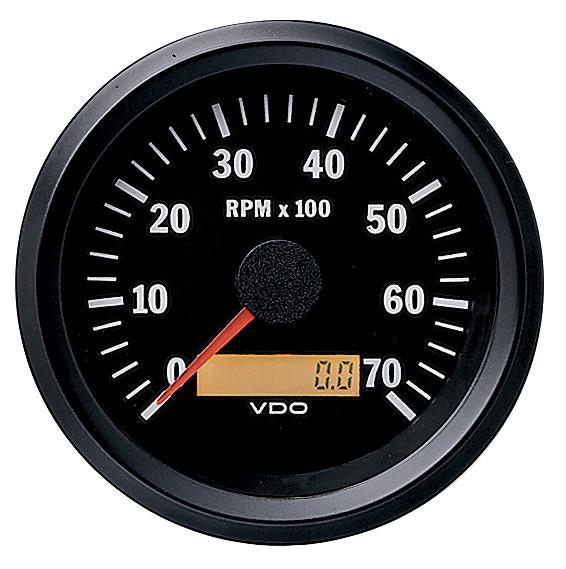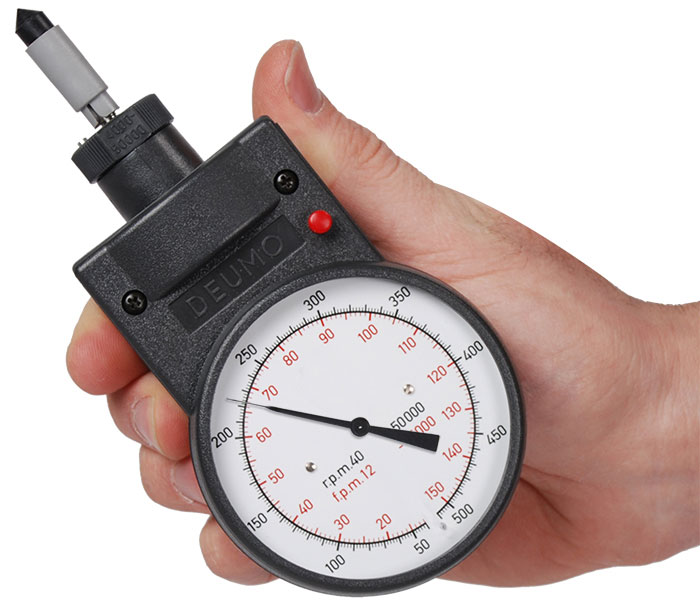Discover How a Tachometer Can Improve Your Vehicle's Performance
Discover How a Tachometer Can Improve Your Vehicle's Performance
Blog Article
The Value of a Tachometer in Keeping An Eye On Engine Rate and Efficiency in Automotive Applications
In the realm of vehicle design, the tachometer stands as a pivotal instrument in the driver's arsenal, supplying a direct home window right into the inner operations of a lorry's engine. Beyond its function as a plain gauge of changes per min (RPM), the tachometer works as an essential tool for enthusiasts and professionals alike, offering real-time understandings right into engine efficiency and health. Recognizing the relevance of this gadget exceeds surface-level observations, delving right into the intricate relationship in between engine rate, power outcome, and total driving experience. As we discover the complex duty of the tachometer in automotive applications, a much deeper appreciation for its impact on lorry characteristics and effectiveness starts to arise.
Significance of Monitoring Engine RPM
Checking engine RPM, or changes per minute, is a critical aspect of automobile maintenance and performance examination. Engine RPM directly associates with the speed at which the engine's crankshaft turns, showing how rapidly the engine is running - tachometer. By keeping track of RPM, technicians can evaluate the wellness of the engine, identify possible problems, and fine-tune performance. An unusual RPM reading may signify troubles such as engine misfires, damaged ignition system, or concerns with the fuel delivery system. Consistently high RPM readings can indicate hostile driving behaviors or the requirement for a higher gear change to enhance fuel performance.
Furthermore, monitoring engine RPM is necessary for efficiency evaluation in auto racing and high-performance cars. In recap, keeping track of engine RPM is not only crucial for detecting issues but additionally for enhancing engine efficiency in numerous automotive applications.

Advantages of Real-Time Data
In automotive applications, real-time data plays a critical function in offering instantaneous understandings right into the efficiency and condition of the lorry. By constantly keeping track of numerous parameters such as engine rate, temperature level, fuel consumption, and more, real-time data provides numerous advantages that add to improved effectiveness and security on the road.
One significant advantage of real-time data is its capability to sharp motorists and technicians to any kind of abnormalities or problems quickly. This positive method makes it possible for fast identification of possible troubles, enabling timely interventions to stop further damage or malfunctions. In addition, real-time data helps with efficiency optimization by providing immediate feedback on driving practices and engine effectiveness. Drivers can change their habits in real-time based upon this details to achieve far better gas economic situation and extend the lifespan of click to find out more their car.

In addition, real-time information plays an important function in contemporary auto diagnostics, making it possible for specialists to promptly diagnose and address malfunctions. This brings about decreased downtime, lower maintenance expenses, and inevitably, improved general automobile reliability and durability (tachometer). By taking advantage of the power of real-time information, vehicle stakeholders can make informed choices that favorably influence both the efficiency and long life of the vehicle
Effect on Equipment Shifts
Effective equipment changes in auto applications substantially affect total efficiency and driving experience. The tachometer plays a vital function in optimizing equipment shifts by offering real-time engine rate information to the motorist. When approaching the redline on the tachometer, it signifies the driver to upshift to avoid over-revving the engine and triggering prospective damage. On the other hand, downshifting at the appropriate minute can assist keep the engine in its power band, guaranteeing receptive acceleration when required.
Furthermore, the tachometer help in attaining smoother gear shifts, specifically in hands-on transmissions. By checking engine speed, vehicle drivers can perform gear shifts at the optimal RPM array, minimizing jerking motions and minimizing endure the transmission components. This precision in equipment changes not only boosts driving convenience yet also adds to fuel effectiveness.
Enhancing Gas Effectiveness
Given the critical function the tachometer plays in maximizing gear shifts for efficiency and engine health, it directly adds to maximizing fuel efficiency in vehicle applications. By supplying site web real-time comments on engine speed, the tachometer assists vehicle drivers in maintaining the most reliable RPM array for fuel economic situation. When motorists regularly monitor the tachometer and adjust their driving practices accordingly, they can prevent unnecessary fuel consumption triggered by over-revving or lugging the engine.
In addition, the tachometer aids vehicle drivers determine the most fuel-efficient gear to be in at any type of provided moment, preventing the engine from functioning tougher than necessary. In verdict, the tachometer serves as a useful device in boosting fuel performance by promoting optimum driving habits and determining locations for improvement in the car's read the article performance.

Optimizing Engine Longevity
The tachometer's role in keeping an eye on engine speed and performance is crucial in ensuring the durability of automobile engines. Keeping an eye on the tachometer enables chauffeurs to stay within the advised RPM variety for their car, protecting against unneeded stress on the engine and prolonging its life-span.

Verdict
Finally, the tachometer plays an important role in checking engine speed and efficiency in automobile applications. By giving real-time data on RPM, it enables reliable gear shifts, enhanced fuel performance, and taken full advantage of engine longevity. This tool is important for maintaining ideal engine efficiency and ensuring the total capability of a vehicle.
Report this page